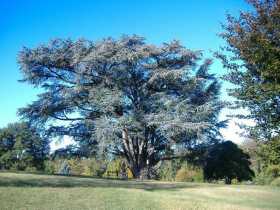
You, your god, and a stick of incense.
That's all that you need to get a daily observance in place.
And—believe me—if you don't have a daily observance going, you need to start one stat. Every good garden requires regular cultivation. What would you think of a friend who only comes to you when she needs something?
Stand before an image of your heart-god.
(I'm using the word “god” inclusively here.) This can be a statue, a picture, or an aniconic symbol.
Stand, don't sit. (Sitting is passive, and this needs to be an act of active engagement.) Think of it as standing to attention. Think of it as rising when someone important enters the room.
Light the incense.
"The offering," they say, "bears the prayer." Actually, coals and a grain or two of quality natural incense would be best, but you can't beat the ease of stick incense. Here, as always in pagan ritual, the offering is the go-between, the mediator.
Be in the presence of your god.
What you do next is up to you. If you pray, pray. If you know a hymn, sing it. If you'd rather stand silently in rapt contemplation, do that. If a state of no-mind better suits you, that's fine. (Silent time with a friend is sometimes the most intimate time of all.) Always, you should be listening for the voice of the god.






















